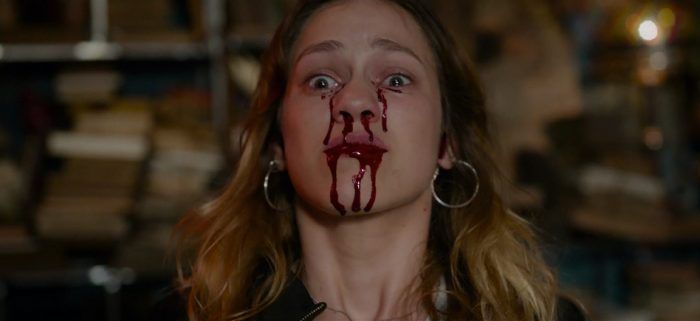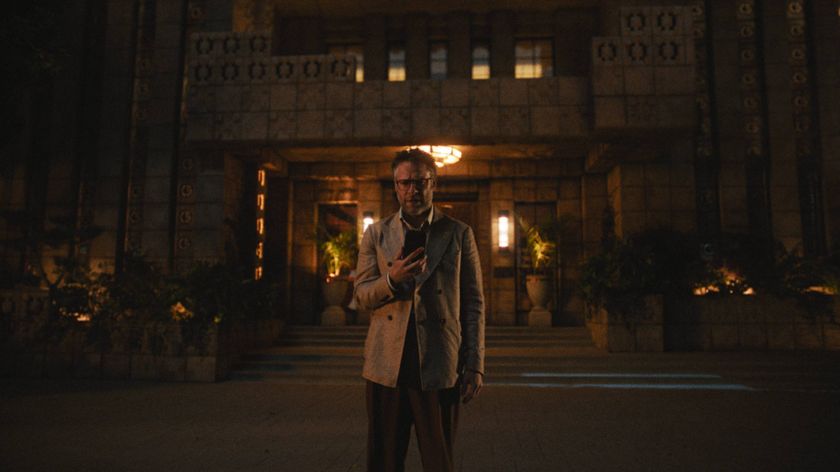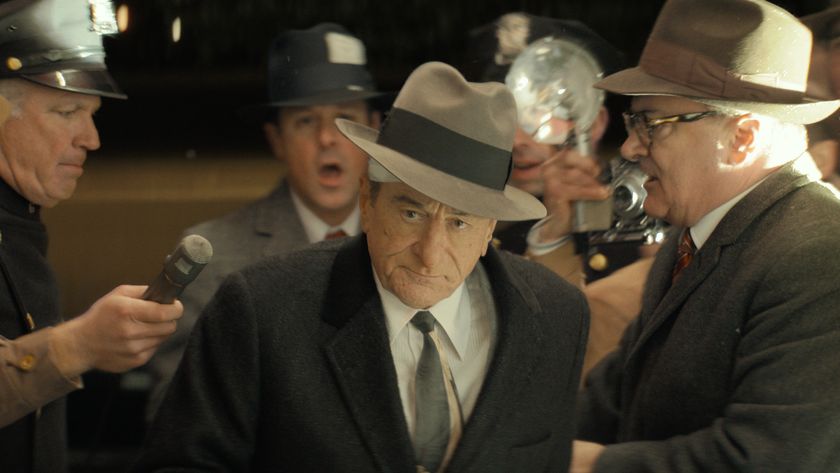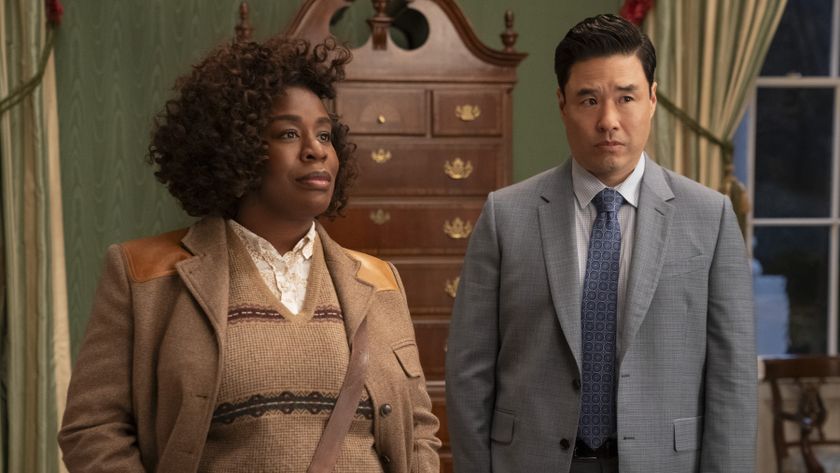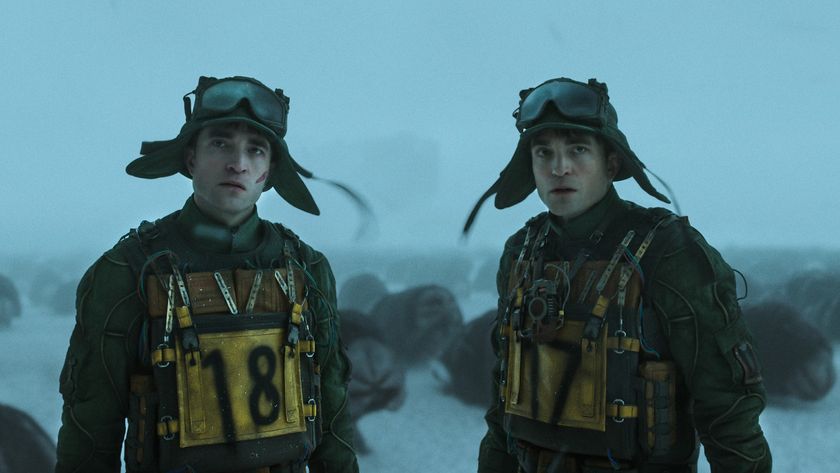What to Watch Verdict
'Kandisha' blends religious demonism with modern womanly horrors and comes up with something that's a rather rudimentary take on stalk-and-kill terrorization.
Pros
- +
🐰 Monster designs are bold.
- +
🐰 Splatters its gore.
- +
🐰 Alexandre Bustillo & Julien Maury's signatures are there.
Cons
- -
🐰 Unevenly paced.
- -
🐰 Messages become lost in haunted predictability.
- -
🐰 Far slighter than openings might lead you to presume.
Alexandre Bustillo and Julien Maury’s Kandisha is the most unsure I’ve seen the filmmaking tandem until their penchant for unavoidable gruesomeness splashes the screen. Where Bustillo and Maury have chosen to highlight monsters of human flesh, their latest encounters a man-slaying demon with cloven hooves. At times, Kandisha feels like a departure from Inside or Among The Living—teenagers battle the supernatural in an unsafe societal climate for women. There exist no subtle swipes at misogynistic abuse, and there’s a sloppiness to a narrative that’s rage-fueled but unforgiving without the duo’s typical striking power, as a more formulaic urban creature feature follows religious guidelines chiseled into stone.
Three female friends—Bintou (Suzy Bemba), Amélie (Mathilde Lamusse), and Morjana (Samarcande Saadi)—spend their nights as graffiti taggers while gossiping about boy drama. It’s after one of their late-night painting sessions that Amélie is assaulted by her ex-boyfriend, and she enacts the name of a demon called “Aicha Kandisha” as an act of furious revenge. Reports the following day confirm that Amélie’s past lover died the previous night after being struck by an automobile, but then the deaths continue as more males are slain by the day. Amélie correctly presumes it’s Kandisha who’s claiming all the boys’ souls, and she’s the only one who can vanquish her murderous guardian.
To be fair, Kandisha doesn’t feel like many other paranormal slasher hybrids for a difference that shouldn’t be notable, and yet here we are—the girl-gang focus. Bintou, Amélie, and Morjana are permitted the same crass friendship banter typically reserved for boyhood, zinging each other or discussing crushes or general rule-breaking activities. Instead? Their gender counterparts become vulnerable targets, flipping the trope on women being viewed as nothing but fodder for killers. Amélie fights back against a drunken pursuer who refuses to acknowledge the word “no” with extreme remorselessness, calling forth an underworld beast whose massacre spree ignites commentary about solving hatred with another heaping serving of blood-boiling retribution.
The crux of Kandisha is its stance on eye-for-eye reactions and the uncontainable violence that piles a body count well past what’s deemed as one sole deserving party. It’s contemporarily folkloric as Aicha Kandisha abides by Candyman rules and requires an Imam’s divine knowledge for defensive maneuvers—but the tonal pacing often comes off as wonky. It’s almost twenty minutes into an eighty(ish) minute duration that Kandisha even becomes a presence, then the narrative inevitably overburdens whatever suspense might exist. It’s a domino effect of unstoppable deaths, rippled devastation thanks to one heat-of-the-moment decision, and three girls reliving the same hell that wields karma as a weapon. Bustillo and Maury challenge their audiences but undercut the importance of contesting themes that linger after vengeance is leveled and struggle to sustain “authentic” character development that ends up feeling like wasted time.
As with any other Bustillo and Maury production, Kandisha still has a way with visual depictions of gruesome fates and furthermore here, nails the presentation of Kandisha herself. The seductive, jaw-dropping siren of sorts uses her beauty hidden behind a black-lace veil to lure men in before bending them into pretzels or throwing them from apartment complex windows. Kandisha’s brute strength crushes abdomens underfoot or exposes broken bone fragments with an appendage’s twist, all while the conjuring’s physical form becomes more cryptid-like as a transformation with every encounter. Animalistic features stretch limbs, stack on height, and gone are the alluring notes of modelesque sexuality that woo her victims before a punishing end. Bustillo and Maury understand the intricacies that go into representing horror on-screen with such imagination; it’s a shame the jumble of kill sequences and seance exorcisms are presented with an off-kilter wobble.
I’ll always admire Alexandre Bustillo and Julien Maury’s ambition, even in a slight misfire like Kandisha. There’s an attempt to rewire horror cinema DNA with its swapping of gendered power dynamics, except the ensuing story stumbles once focus shifts from Amélie’s desperation turned cathartic release to Kandisha’s inescapable clutches as death becomes the film’s signature. This is a Bustillo and Maury collaboration after all, so blood-stained nursery rooms in hospitals are to be expected—it’s all just lacking their typical macabre hammer strokes that drive milestone nails so deep. It’s palatably gruesome and fantasmically chaotic, yet there’s something that keeps me from stacking Kandisha alongside Inside or Among The Living without a moment’s hesitation.
Matt Donato is a Rotten Tomatoes approved film critic who stays up too late typing words for What To Watch, IGN, Paste, Bloody Disgusting, Fangoria and countless other publications. He is a member of Critics Choice and co-hosts a weekly livestream with Perri Nemiroff called the Merri Hour. You probably shouldn't feed him after midnight, just to be safe.
